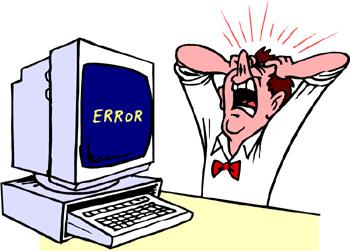Why are there bugs/defects in the software?
Bài đăng này đã không được cập nhật trong 7 năm
Question comes to mind “Why are there bugs/defects in the software? Why/How do errors creep into the application and make it buggy?”

There are many reasons for software bugs. Most common reason is human mistakes in software design and coding. If you realize the paradoxical nature of this question. i.e. If there won’t be any errors in software then there won’t be any need of testing. But again, as long as software development exists as a field of business, there would be errors in them. Hence if u say something is Bug Free, it translates as: It is either too trivial or non-existent!
The increasing complexity of software would make sure that there are defects in them. But the question remains: what are those factors that cause defects in software?
Well, here are the some reasons why bugs creep into the software that we develop or test:
Human Factor:
It is because human beings develop software. It is often said that “to err is human, to forgive divine”. Human beings are not perfect. They are prone to make mistakes. As human beings develop software, it would be foolish to expect the software to be perfect and without any defects in it! Hence there are errors in software. Ironically, we are yet to discover any other non-human agent who could develop software any better than human beings. So we continue to rely on the human intelligence to develop software thus allowing chances of errors in it.
Communication Failure:
Another common reason for software defects can be miscommunication, lack of communication or erroneous communication during software development! The communication failure can happen at different levels (requirement gathering stage, requirement interpretation/documentation stage, requirement-to-implementation translation stage etc.). Imagine a case where the requirements are vague or incomplete. This could lead to a situation where the programmers would have to deal with problems that are not clearly understood, thus leading to errors. Another scenario of problem with communication may arise when a programmer tries to modify code developed by another programmer.
Unrealistic Development Timeframe:
Let’s face it. More often than not software are developed under crazy release schedules, with limited/insufficient resources and with unrealistic project deadlines. So it is probable that compromises are made in requirement/design to meet delivery schedules. Sometimes the programmers are not given enough time to design, develop or test their code before handing it over to the testing team. Late design changes can require last minute code changes, which are likely to introduce errors.
Poor Design Logic:
In this era of complex software systems development, sometimes the software is so complicated that it requires some level of R&D and brainstorming to reach a reliable solution. Lack of patience and an urge to complete it as quickly as possible may lead to errors. Misapplication of technology (components, products, techniques), desire/temptation to use the easiest way to implement solution, lack of proper understanding of the technical feasibility before designing the architecture all can invite errors. Unfortunately, it is not that the people are not smart; it is just that they often don't-have-time/are-not-allowed to think!
Poor Coding Practices:
Sometimes errors are slipped into the code due to simply bad coding. Bad coding practices such as inefficient or missing error/exception handling, lack of proper validations (data types, field ranges, boundary conditions, memory overflows etc.) may lead to introduction of errors in the code. In addition to this some programmers might be working with poor tools, faulty compilers, debuggers, profilers, validators etc. making it almost inevitable to invite errors and making it too difficult to debug them!
Lack Of Version Control:
If the functionality tested in previous builds & after next few build it is seeing that regression errors occurs so it is very difficult to identify the regression errors. So in such a case version controlling makes a key role.
Third-party Buggy Tools:
Quite often during software development we require many third-party tools, which in turn are software and may contain some bugs in them. These tools could be tools that aid in the programming (e.g. class libraries, shared DLLs, compilers, HTML editors, debuggers etc.) or some third-party shrink-wrapped plug-ins / add-ons used to save time (like a shopping cart plug-in, a map navigation API, a third party client for 24X7 tech support etc.). A bug in such tools may in turn cause bugs in the software that is being developed.
Poor Software Testing Skill:
In many organizations poor testing can be executed, this would not like to see by any tester but let’s face it. There can be insufficient knowledge of testing skills (Lack of skilled testing) which leads to defects in the system. Also if tester is not paying attention in testing activity & doing testing without giving importance to it, so it results poor quality of the product & major bugs remains in the software.
Overconfident People:
People prefer to say things like: ‘no problem’ ‘piece of cake’ ‘finishing it right now’ This kind of attentions or over confident sometimes may cause the defect if somehow miss any vital points.
Last minute changes:
Changes that are made to requirement, infrastructure, tools, platform can be dangerous, especially if are being made at the 11th hours of a project release. Actions like database migration, making your software compatible across a variety of OS/browsers can be complex things and if done in a hurry due to a last minute change in the requirement may cause errors in the application. These kind of late changes may result in last minute code changes, which are likely to introduce errors.
Considering this article has been talking about possible cause of errors, defects and bugs in software.
References
All rights reserved